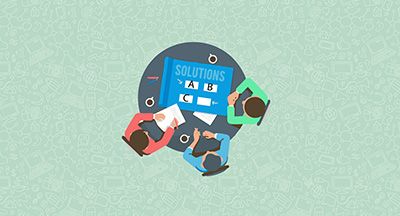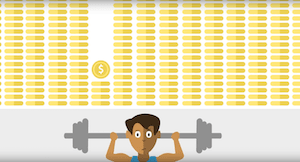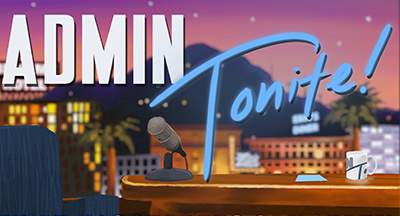
Just shy of three decades old, social media has grown from a novel concept used by tech-savvy internet surfers to a multi-platform phenomenon that even grandma loves. And, grandma isn’t alone—nearly 63 percent of the world population (and over 90 percent of youth!) report using social media, and there’s no sign of this trend slowing down.
Considering social media’s growing prominence, it comes as no surprise that the generations who have grown up with tablets and smartphones in hand—aka, the K–12 students of today—hold a strong affinity for this digital cyberspace. But dangers lurk under the bright and inviting surface of social media, and these dangers can have detrimental impacts on impressionable young users. So, do the negatives outweigh the positives? Is it possible to protect students from harm while still allowing them to enjoy the rose-colored side of social networks? Grab your longboard and catch a wave—we're diving into the pros and cons of students and social media. Kowabunga!
The bright side of social media
Connection
There’s no question that social media keeps us connected. Humans are social creatures by nature, and keeping up with friends and family is impactful and rewarding, even when it is done through a screen. With the ability to click an app and immediately share things with others, we are empowered to connect virtually anytime, anywhere.In fact, a recent global survey found that internet use has a positive correlation with wellbeing and satisfaction with one’s life. Social media is a wonderful resource with which to learn new things and expand our horizons. Students are no longer bound to their immediate physical surroundings, but they can explore and find purpose in a plethora of interests.
Community
Thanks to its internet-based accessibility, social media platforms offer the perfect opportunity to interact with like-minded individuals, regardless of proximity. If a student has a niche interest or a highly specific hobby, social media pages and groups are a great place for them to find others who share their unique pastimes. It’s important not to discount communication simply because it takes place online—studies show it is just as impactful as face-to-face interactions.In this way, social media can harbor communities that don’t flourish in any particular town or city, yet are thriving and supportive nonetheless. This could be especially impactful to students who aren’t involved in their school’s mainstream extracurriculars. They may very well find valuable connections online that don’t exist with their peers in their classroom.
The shark-infested waters of social media
Cyberbullying
Because the world of social media is intangible, it’s not uncommon for users (especially children and teens) to fail to understand how real-world consequences are tied to their actions online. This lack of concern for conduct paired with the false confidence felt by hiding behind a screen creates the perfect storm for peer cyberbullying. Unfortunately, it will come as no surprise studies report a correlation between cyberbullying victims and higher rates of self-harm.In the same way that schools uphold bullying protocols, K–12 professionals can consider expanding these codes of conduct to the cyberspace. Although it’s more difficult to spot and address bullying when it occurs in a private Instagram message instead of a hallway, sharing these protocols with your students will help them feel confident and empowered to share online incidents with a trusted adult.
Mental Health Concerns
Cyberbullying aside, social media poses additional mental health concerns to users. Comparison is the thief of joy, and social comparisons are easy to make when viewing others’ successes and accomplishments one after another in a feed. For this reason, self-esteem levels are strongly (and quickly) influenced by content we see on these platforms.In fact, self-ratings of self-esteem have been shown to fluctuate significantly when recorded before and after scrolling through a social platform. Considering how social networks are designed to be addictive and keep users scrolling, it is easy to see how this can become a destructive cycle to mental health, no matter the user’s age.
Interestingly, studies have shown that adolescents are not unsuspecting victims of these negative mental effects. Surveyed individuals ages 11–18 consciously perceive social media to be detrimental to mood and anxiety, as well as creating an addictive draw for the young users. This addictive effect can easily begin to cut into sleep patterns, study time, and other necessary activities. It is a good idea for students to maintain a sense of moderation, either self-enforced or through parent-supervised screentime restrictions.
Bad actors and bad intentions
Just like in real life, not everyone can be trusted. Scammers and predatory profiles are not uncommon on social media, and some can be very hard to spot. To make matters worse, there are many instances where K-12-aged students are the sole targets of malicious intent. Particularly vulnerable youth, such as those with a poor family situation or individuals questioning their sexuality, may be more susceptible to these advances.Ultimately, adolescents are more likely to fall victim when uneducated and unsupported online. Teaching digital citizenship skills in the classroom can be a wonderful way to begin instilling safety measures in kids’ minds. There are great tips to pass along to parents, too, because keeping students safe online is most effective when supported from all angles.
So, is social media a “No Surf Zone” for students?
It may seem like the simple solution is to keep students off social platforms. There are sharks in the water—keep out! On the other hand, social media is filled with fun and connection and support—it all comes down to how students use social media and who they connect with.As social networks become increasingly engrained in everyday life, it’s important to remember that ignoring and avoiding the topic with students will only postpone outcomes, not eliminate them. By building responsible online habits now, students can stay happy and safe online in the long run! Rest assured safety is possible among the waves, and students can explore the digital world around them and all the wonder it contains. Although sharks may lurk, educated and equipped students won’t get bit.
Follow-up resource: Social media is a school tool
Find out the best ways to use social media in your district, including for parent engagement.WHAT'S NEXT FOR YOUR EDTECH? The right combo of tools & support retains staff and serves students better. We'd love to help. Visit skyward.com/get-started to learn more.

|
Lexi Beecher Edtech Thought Leader |




